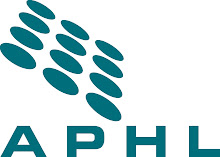by Sharon Shea, MHS, MT(ASCP), director, infectious disease and food safety programs
If you have followed clinical microbiology listservs, attended ASM’s General Meeting or listened to enteric disease talks in the past year, you may have been anticipating the October 16 release of an MMWR Recommendations and Report issue, “Recommendations for Diagnosis of Shiga Toxin-Producing Escherichia coli Infections by Clinical Laboratories.” These guidelines were developed by CDC in collaboration with APHL and a host of clinical, academic and public health partners. The report highlights the importance of prompt and accurate diagnosis of STEC infections for both proper patient treatment and effective public health control. Detailed guidelines for STEC testing in the clinical laboratory are provided, including the recommendation that all stools submitted for routine testing from patients with acute community-acquired diarrhea be simultaneously cultured for O157 STEC and tested with an assay that detects Shiga toxins (to detect non-O157 STEC). Such testing will be a major change in practice for some hospital laboratories and could represent an increase in laboratory costs. Who will bear the cost of this testing? How much of that cost can be reimbursed to the lab?
We in public health need to support our clinical partners as they adopt the new recommendations. Is your laboratory ready to accept isolates and/or broths from laboratories in your state/county? Who will pay for the packaging and shipping? What will you do with those samples once they are received? How can this work be supported at a time of severe cutbacks in public health spending, without additional federal support?
APHL’s STEC work group, in conjunction with state and federal partners, is developing guidelines for receiving and characterizing STEC isolates and specimens in public health laboratories. These companion guidelines will be released in early 2010. Your input on that document or the impact of the new STEC diagnostic recommendations is welcome.
Monday, November 2, 2009
Subscribe to:
Comments (Atom)




